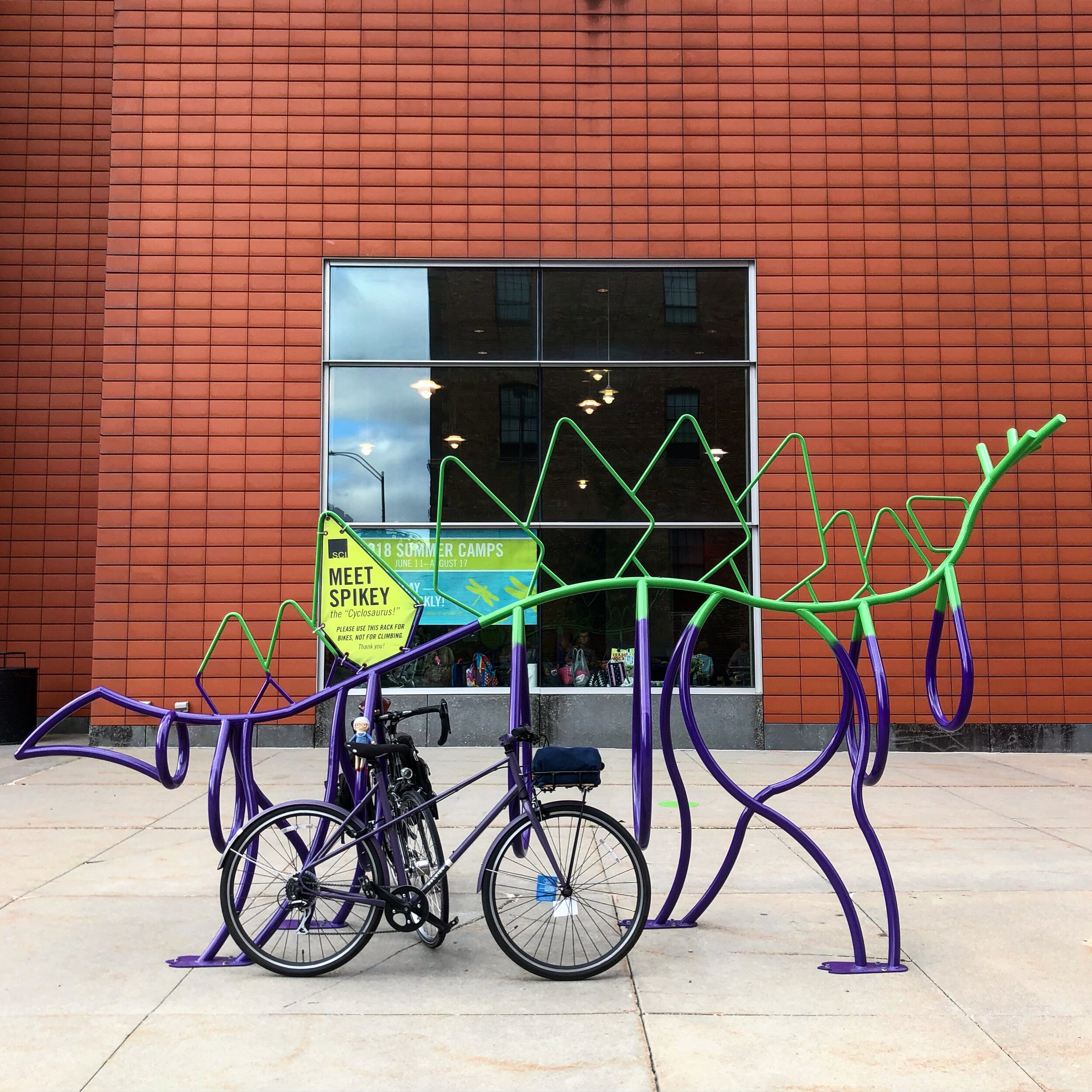Preservationists need a different set of resources to be able to advocate for themselves, stories of the past, and the built environment.
In response to conversations with many of you, #DismantlePreservation Virtual Unconference will be a one day free event that will delve into mental health, unions/salary negotiations, public service loan forgiveness, implicit bias in preservation, preserving the full story, and how to expand who is investing in old buildings. Let’s dismantle historic preservation and rebuild it for the benefit of our communities today and tomorrow.
9-10:15 am EST - Expanding Who is Investing
“Preservation” and “real estate investing” typically conjure up images of wealthy elites with a treasure trove of money to capitalize on the hottest opportunities before others even catch wind that they exist. And rightfully so, traditional investing and capital markets were only for those in the know. But as social patterns have shifted, so have living preferences and the call for more equitable representation at all tables - preservation and real estate development included. 2020 taught us that business can no longer be conducted as usual. Forward thinking is required at the intersection of finance, honoring architecture and practical modernity. Housing Joint Venture is a unique real estate development and education firm on a mission to do just that by democratizing access to real estate investing. Tune in to this session to learn how they use a super boring, almost sleepy model to turn traditional capital markets on their head and deliver value-add real estate investments at scale.
Speaker: John Delia and Richelle Delia PhD, Founders Housing JV
10:30-11:45 am EST - Identifying and Tackling Implicit Bias in Preservation
Implicit bias is defined as a bias based on our unconscious feelings, including feelings that contradict our actual beliefs. Implicit biases exist within the preservation movement. This session will be a discussion about how implicit biases affect the work that we do, including how it can impact the projects we take on, professionals we choose to work with and/or hire, and the ways we approach historic interpretations. Panelists will share their experiences with implicit biases, and discuss strategies to mitigate their impacts.
Speakers: Jeffrey Harris, Historic Preservation Consultant; Melissa Jest, Coordinator of African American Programs for Georgia State Historic Preservation Office; Sam Collins, National Trust for Historic Peservation Board of Advisers; Frank Vagnone, Founder Twisted Preservation
12-12:30 pm EST - Rage Against the Student Loan Machine
Most of us can't escape student loans as we pursue higher education. How do student loans limit our options in the preservation field? How do we deal with the reality of loans as a deterrent to becoming a preservationist? Join Adrienne Burke, six-figure student loan debtor, as she talks about lessons learned, alternative options, and having success with the Public Service Loan Forgiveness program.
Speaker: Adrienne Burke, AICP, Esq.
1-2:15 pm EST - Building Union Power in Preservation
In this session attendees will learn about the experience of public and non-profit sector union workers, the benefits of unionization beyond higher wages, and how unionized cultural workers can build power to fight for a better world.
Speakers: Derek Tulowitzky; TBA American Federation of State, County and Municipal Employees (AFSCME) Organizers
2:30-3:45 pm EST - Let’s Talk About Mental Health
How does the structure of the historic preservation field and related cultural sectors contribute to and affect mental illnesses in its professional practitioners? This session will deconstruct the long-term impacts of low wages, contract employment, labels and stereotypes, that all contribute to burnout and mental illness as preservation professionals. Speakers will share their experiences in finding individual paths to cope with these conditions, while recommending what the field and its employers must do in pursuit of inclusive and mentally healthy workplaces.
Speakers: Ms. Camille Bethune-Brown, Museum Worker and Black Historian ; Mx. Ty Ginter, Queer Historian and Architectural Historian;
4 - 5:30 pm EST - Expanding the Preservation Narrative: From Research to Action HEADLINER
This panel discussion highlights Black, Indigenous, and People of Color (BIPOC) preservationists and their academic research and preservation work. Panelists will briefly introduce how they utilized their academic work into preservation action (e.g., nominations for local, state, and/or national registers, creating toolkits related to preservation, advocacy work, capacity building). Then panel discussion will then examine the importance of BIPOC preservation scholars and practitioners in centering traditionally marginalized voices in historic preservation.
Speakers: Angelo Baca (Doctoral Student, Sociocultural Anthropology, New York University; Cultural Resources Coordinator, Utah Diné Bikéyah); Tejpaul Singh Bainiwal (Doctoral Candidate, Religious Studies, University of California, Riverside; Board member, Asian & Pacific Islander Americans in Historic Preservation); Sarah Zenaida Gould, PhD (Director, Museo del Westside; Co-Chair, Latinos in Heritage Conservation); Jeffrey Harris (Independent historian and historic preservation consultant); Kristen Hayashi, PhD (Director of Collections Management & Access and Curator, Japanese American National Museum; Board member, Asian & Pacific Islander Americans in Historic Preservation); Alison Rose Jefferson MHC, PhD (Historian and Heritage Conservation Consultant, Historian and More); Davianna Pomaika'i McGregor, PhD (Professor of Ethnic Studies and Director of Center for Oral History, University of Hawai'i, Manoa)
Moderator: Michelle G. Magalong, PhD (Presidential Postdoctoral Fellow, School of Architecture, Planning and Preservation, University of Maryland; President, Asian & Pacific Islander Americans in Historic Preservation)
8 - 9:30 pm EST - Burning Down the House
Enjoy rapid fire 6-minute presentations that will introduce you to new concepts, strategies, and lesser known histories. Lightning talks will occur in the following order:
Architecture is both the tool and the result of settler colonialism; Fernando Luiz Lara, Professor and Director of PhD program in Architecture at University of Texas at Austin
Tell the Full Story: A Meditation on the Retelling of History; Kennedy Whiters AIA, Architect & Capital Projects Manager
Historic Preservation and the Fight for Equity; Mary Lu Seidel, Director of Community Engagement for Preservation Chicago
Beyond Buildings: Conserving Sites and Stories of Racial Violence in Los Angeles; Jackson Loop, Architectural Historian
Latino's In Indiana - Lost barrios, voices and their 100 year old Hoosier History; Nicole Martinez -LeGrand, Multicultural Collections Coordinator for Indiana Historical Society
The Systemic Racism of Preservation in Santa Fe; Shawn Evans AIA, Principal at Atkin Olshin Schade Architects
Unlearning Academic Writing & Embracing Copywriting to Reach a Wider Audience; Terra Wheeler, Copywriter & Inclusive Preservationist
Being a Decay Devil; Gregg Ott, Decay Devils organizer
A Wall in the Wild: Erasing the Borderlands; Laiken Jordahl, Borderlands Campaigner with the Center for Biological Diversity
P.S. Since 2017, I’ve been happy to give out tiny conference scholarships to people with big dreams as a part of my Tiny Activist Project. The 2020 Tiny Activist Project scholarship funds are being diverted to provide speaker fees for the Dismantle Preservation Unconference.

















































